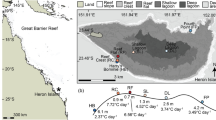Abstract
Light avoidance in larval lampreys is mediated by dermal photoreceptors located in the tail. These photoreceptors continue to function in adults, but they seem redundant because post-metamorphic lampreys possess well-developed eyes. This study examined the role of dermal photoreceptors in adult sea lampreys by testing whether temperature-induced changes in refuge-seeking behavior are mediated by a reduction in dermal photosensitivity. In a lighted arena containing a single shaded refuge platform, lampreys at 22°C displayed five times less search activity and were less likely to attach beneath the refuge platform than lampreys at either 7 or 15°C. A behavioral assay for tail photosensitivity (locomotor response to tail illumination) revealed a corresponding reduction in dermal photosensitivity at 22°C. Moreover, the responses to head illumination (eyes and pineal) did not correspond with the observed light avoidance behaviors. The head was less responsive to light than the tail and was not influenced by temperature. These results provide strong evidence that the dermal photoreceptors continue to mediate light avoidance in adult lampreys, even though adults possess fully functional eyes. The fact that the eyes apparently do not take on this role suggests that there is functional specialization between these two light sensing systems.




Similar content being viewed by others
References
Almeida PR, Quintella BR, Dias NM (2002) Movement of radio-tagged anadromous sea lamprey during the spawning migration in the River Mondego (Portugal). Hydrobiologia 482:1–8
Applegate VC (1950) Natural history of the sea lamprey, Petromyzon marinus, in Michigan. U.S. Fish and Wildlife Services Special Scientific Report: Fisheries 55:1–237
Bertolucci C, Foà A (2004) Extraocular photoreception and circadian entrainment in nonmammalian vertebratates. Chronobiol Int 21:501–519
Binder TR, McDonald DG (2007) Is there a role for vision in the behavior of sea lampreys (Petromyzon marinus) during their upstream spawning migration? Can J Fish Aquat Sci 64:1403–1412
Binder TR, McDonald DG (2008) The role of temperature in controlling diel activity in upstream migrant sea lampreys (Petromyzon marinus). Can J Fish Aquat Sci 65:1113–1121
Braun CB (1996) The sensory biology of the living jawless fishes: a phylogenetic assessment. Brain Behav Evol 48:262–276
Cole WC, Youson JH (1981) The effect of pinealectomy, continuous light, and continuous darkness on metamorphosis of anadromous sea lampreys, Petromyzon marinus L. J Exp Zool 218:397–404
Deliagina TG, Ullén F, Gonzalez M-J, Ehrsson H, Orlovsky GN, Grillner S (1995) Initiation of locomotion by lateral line photoreceptors in lamprey: behavioral and neurophysiological studies. J Exp Biol 198:2581–2591
Farmer GJ (1980) Biology and physiology of feeding in adult lampreys. Can J Fish Aquat Sci 37:1751–1761
Farmer GJF, Beamish WH (1973) Sea lamprey (Petromyzon marinus) predation on freshwater teleosts. J Fish Res Board Can 30:601–605
Foster RG, Hankins MW (2002) Non-rod, non-cone photoreception in the vertebrates. Prog Retin Eye Res 21:507–527
Fu Y, Liao H-W, Do MTH, Yau K-W (2005) Non-image-forming ocular photoreception in vertebrates. Curr Opin Neurobiol 15:415–422
Hosmer DW, Lemeshow S (1999) Applied survival analysis. Wiley, New York
Joss JMP (1973a) Pineal-gonad relationships in the lamprey Lampetra fluviatilis. Gen Comp Endocrinol 21:118–122
Joss JMP (1973b) The pineal complex, melatonin, and color change in the lamprey Lampetra. Gen Comp Endocrinol 21:188–195
Kelso JRM, Gardner WM (2000) Emigration, upstream movement, and habitat use by sterile and fertile sea lampreys in three Lake Superior tributaries. N Am J Fish Manage 20:144–153
Manion PJ, Hanson LH (1980) Spawning behavior and fecundity of lampreys from the upper three Great Lakes. Can J Fish Aquat Sci 37:1635–1640
Moore JW, Mallatt JM (1980) Feeding of larval lampreys. Can J Fish Aquat Sci 37:1658–1664
Morita Y, Tabata M, Uchida K, Samejima M (1992) Pineal-dependent locomotor activity of lamprey, Lampetra japonica, measured in relation to LD cycle and circadian rhythmicity. J Comp Physiol A 171:555–562
Newth DR, Ross DM (1955) On the reaction to light of Myxine glutinosa L. J Exp Biol 32:4–21
Patzner RA (1978) Experimental studies on the light sense in the hagfish, Eptatretus burgeri and Paramyxine atami (Cyclostomata). Helgoländer Wiss Meeresunters 31:180–190
Ronan M, Bodznick D (1991) Behavioral and neurophysiological demonstration of a lateralis skin photosensitivity in larval sea lampreys. J Exp Biol 161:97–117
Steven DM (1950) Some properties of the photoreceptors of the brook lamprey. J Exp Biol 27:350–364
Tamotsu S, Morita Y (1986) Photoreception in pineal organs of larval and adult lampreys, Lampetra japonica. J Comp Physiol A 159:1–5
Tosini G, Avery RA (1996) Dermal photoreceptors regulate basking behavior in the lizard Podarcis muralis. Physiol Behav 59:195–198
Ullén F, Orlovsky GN, Deliagina TG, Grillner S (1993) Role of dermal photoreceptors and lateral eyes in initiation and orientation of locomotion in lamprey. Behav Brain Res 54:107–110
Young JZ (1935a) The photoreceptors of lampreys. I. Light-sensitive fibres in the lateral line nerves. J Exp Biol 12:229–238
Young JZ (1935b) The photoreceptors of lampreys. II. The function of the pineal complex. J Exp Biol 12:254–270
Zar JH (1999) Biostatistical analysis, 4th edn. Prentice Hall, New Jersey, pp 165–167, 223–225
Zimmerman K, Heatwole H (1990) Cutaneous photoreception: a new sensory mechanism for reptiles. Copeia 1990(3):860–862
Acknowledgments
We thank Scott Hawes and Anne Eason for their assistance in conducting the experiments and transcribing the videos. Thanks also to Bob Frank and Matt Cornish for their technical assistance in the Aqualab. Funding for this research was provided by the Great Lakes Fishery Commission. The experiments reported herein were performed in accordance with the “Principles of Animal Care”, publication N0. 86–23, revised 1985 of the National Institute of Health and with Canadian Council of Animal Care (CCAC) guidelines.
Author information
Authors and Affiliations
Corresponding author
Rights and permissions
About this article
Cite this article
Binder, T.R., McDonald, D.G. The role of dermal photoreceptors during the sea lamprey (Petromyzon marinus) spawning migration. J Comp Physiol A 194, 921–928 (2008). https://doi.org/10.1007/s00359-008-0364-9
Received:
Revised:
Accepted:
Published:
Issue Date:
DOI: https://doi.org/10.1007/s00359-008-0364-9




